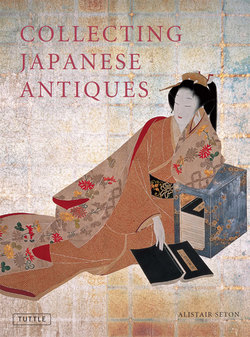Collecting Japanese Antiques

Реклама. ООО «ЛитРес», ИНН: 7719571260.
Оглавление
Alistair Seton. Collecting Japanese Antiques
Отрывок из книги
JAPANESE
ANTIQUES
.....
Though the word "dwarf" springs to mind, most bonsai trees are standard species. Occasionally, bonsai lovers search in wild, windswept places for naturally occurring miniatures. Trees are primarily kept small by deliberate pruning, using shallow containers, pinching off new growth, and repotting every year or two. Heights range from some 2 inches (5 cm) to 3 feet (1 m). The container is often oval for deciduous trees and rectangular for evergreens, but it also depends on the style. Glazed pots work well with flowering trees, while unglazed pots give a look of age. Styles like upright, slanting, cascading, twisting trunk, weeping cascade, twin trunk, clumped or forest, and clinging are self-explanatory. In all cases, asymmetry is de rigueur (never planted in the middle, and leaning from the outside to the inside if it leans), as is a good balance between the pot and the tree's size and height.
A natural look, achieved with no evidence of human tampering, matters too. Usually one side is the front or viewing side. Traditionally, a tree is wider at the base and then slimmer, but bunjin (literati scholars) liked to joke and do it the other way round. People talk of a tri-relationship between life (or deity), the bonsai grower, and the tree, while the form of the tree often turns out to be triangular, to please the eye. The grower's nature matters too; he must have all the virtues of patience.
.....